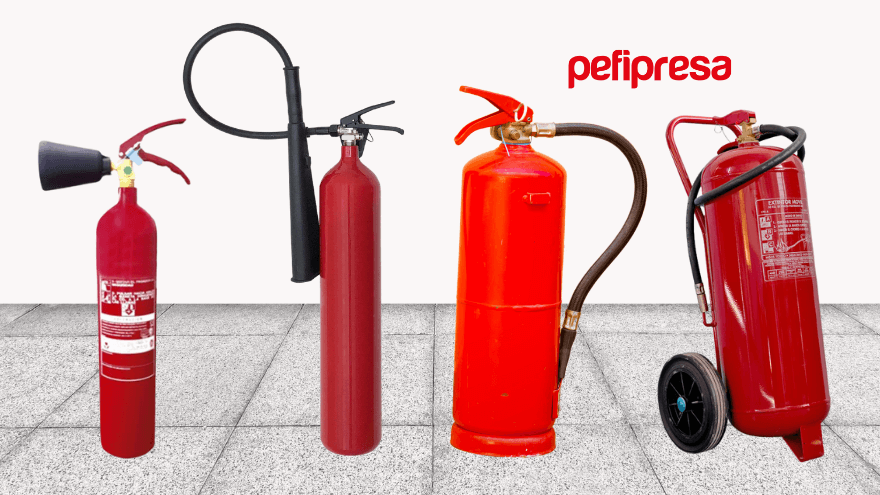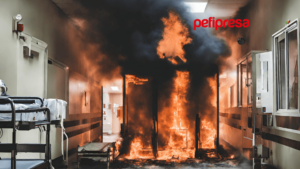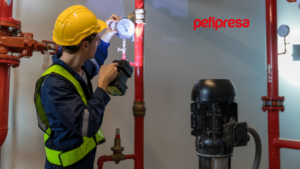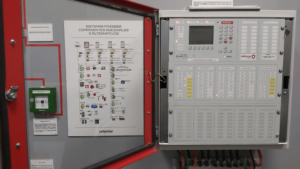The risk of fire is a factor of permanent presence in all types of establishment. Depending on the materials stored in it, one class of fire or another may occur. That is why we have different types of fire extinguishers, to be able to attack the different types of existing fire .
In this sense, it is of vital importance not only to know how to use a fire extinguisher, but also to know what type of extinguisher to use depending on the type of fire. Examples of these are water, CO2, dry powder fire extinguisher, etc.
Next, we will provide relevant information in this regard, and it is important to pay attention because it can be useful in an emergency situation where there is a risk of fire and every second counts in the action of suffocation and / or extinction.
Fire classes
Fire Class A
It involves solid materials that tend to form embers in the presence of high temperatures. They are usually of organic origin.
Some of them are fabrics, wood, paper, etc.
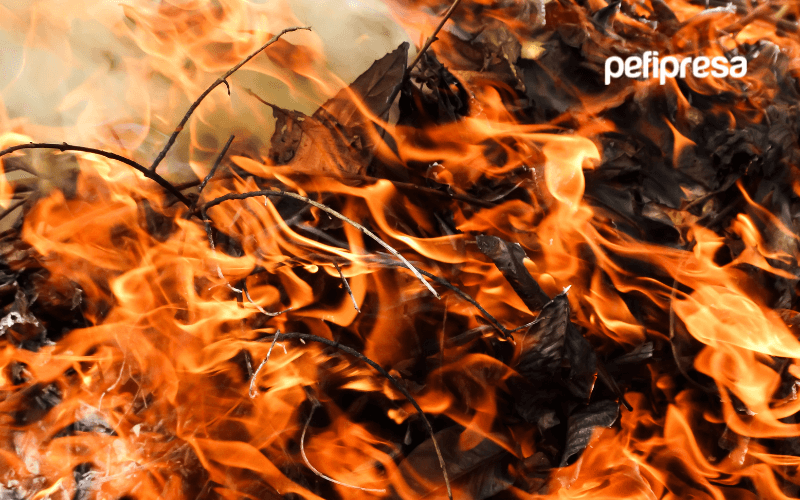
Fire Class B
It is the fire where the combustible material is in a liquid state. Examples of this are gasoline, alcohol, paints, liquid asphalt and others. This type of fire requires that the temperature in the environment be very high.
On the other hand, it is very easy to start, since it only takes a spark. Also, it tends to be explosive.
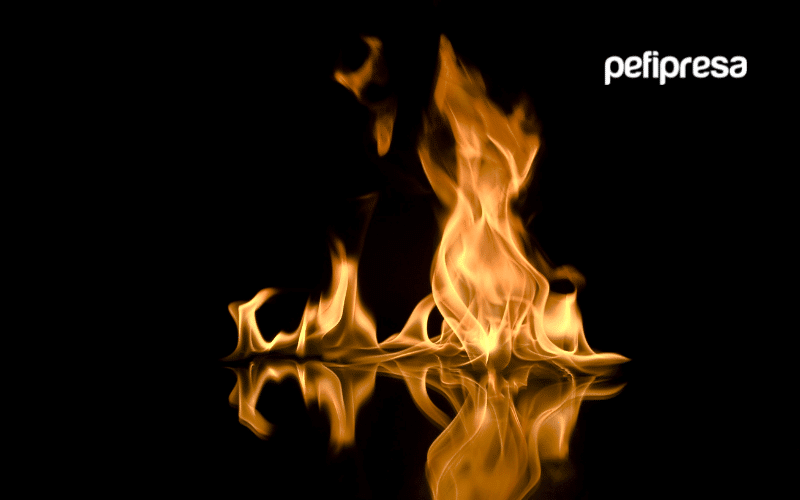
Fire Class C
It originates due to gases that are flammable, such as propane gas, hydrogen or natural gas, among others.
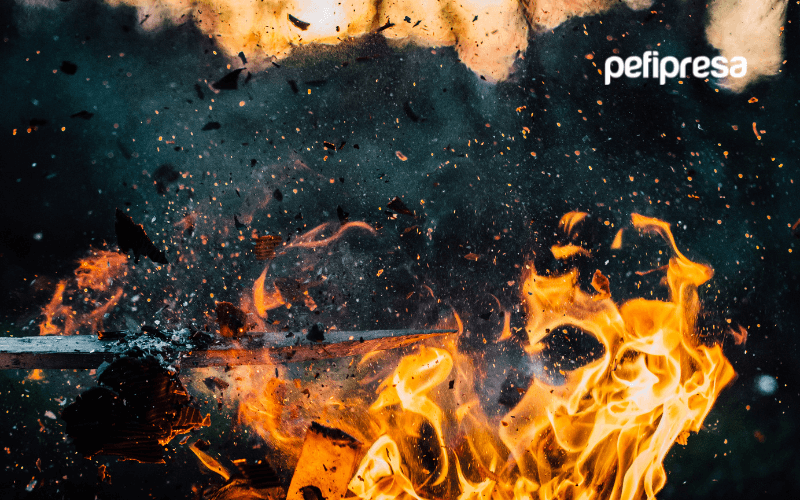
Fire Class D
They are fires that are produced by the ignition of metals such as magnesium, potassium, sodium and other similar ones.
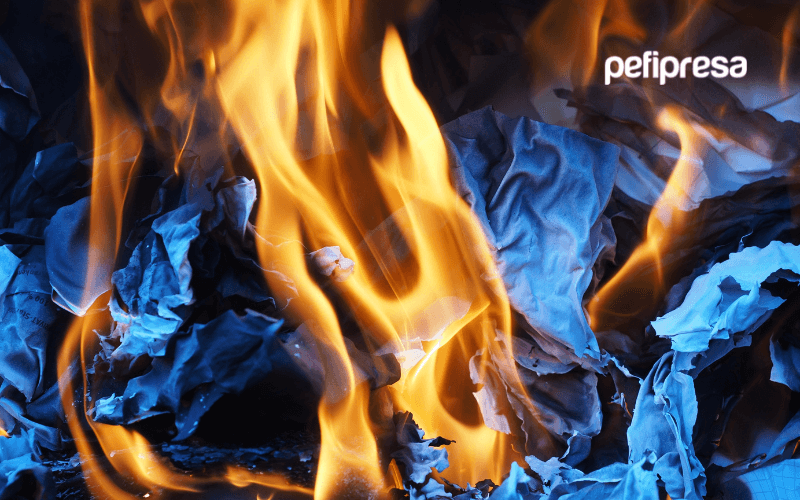
Fire Class F
Its combustible material is fats and oils used in cooking.
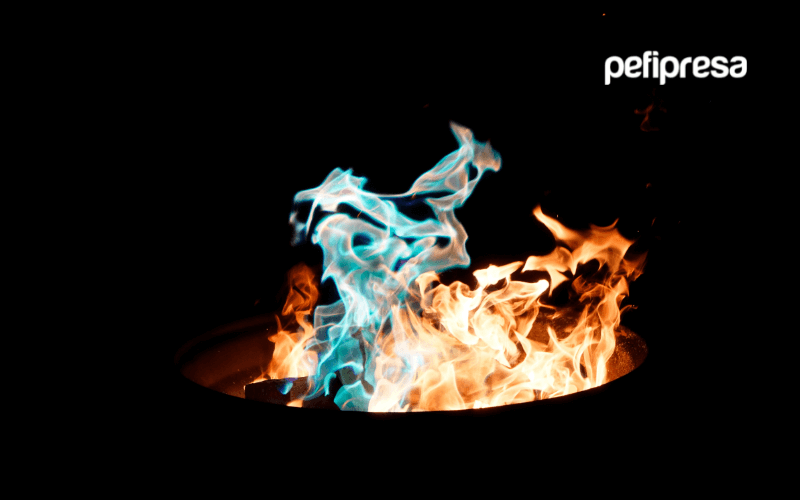
It should be noted that fires where electricity is present do not have a classification as such, since it is considered to act as a triggering agent and not as a flammable material.
Fire extinguishers have different classifications for use in electrical risk environments, where certain voltage levels are taken into account and according to the site where it occurs.
Each of these classes of fire mentioned must be fought by a type of extinguisher. Depending on the type of fire, one or another of the types of extinguishers will be effective.
Use of fire extinguishers according to the class of fire
Selecting well the types of fire extinguishers to use in extinguishing a fire is very important, because doing it the wrong way will not only be ineffective, but can further fan the flames. An example is when the water is used to try to put out a fire that occurs with cooking oil.
It is for this reason that everyone should know the basics of how to extinguish a fire, knowing at least the risks they run from this cause in their home and workplace.
Types of fire extinguishers
Next, we present the different types of fire extinguishers indicating the class of fire for which they are effective. Different types of fire extinguishers are generally suitable for various classes of fire.
ABC dry powder fire extinguisher
It is undoubtedly the most used type of fire extinguisher. This is because it can fight a wide variety of types of fire. It is also effective on materials that are abundant in houses, shops, industries, companies and offices.
It is effective for fighting type A, B and C fires.
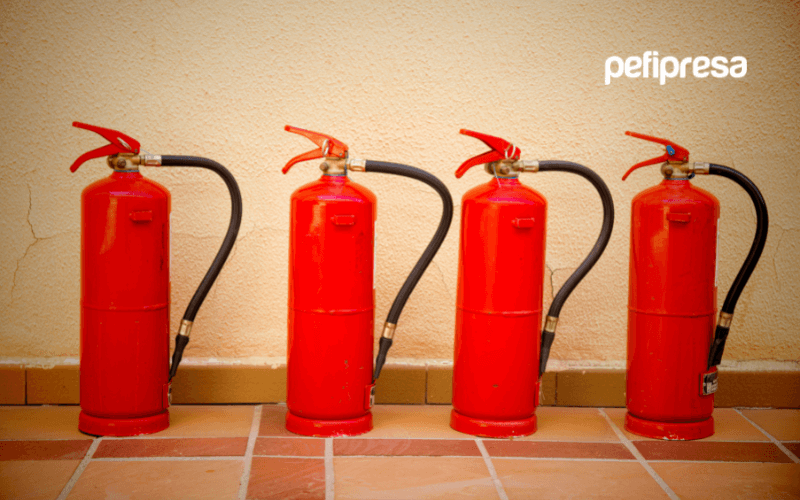
Water fire extinguisher
It is ideal for putting out type A fires, that is, in solid non-metallic elements.
Only care should be taken not to use it in places where there is operating electricity, as it can cause personal injury by electrocution.
CO2 fire extinguisher
It is a type of extinguisher suitable for usein extinguishing fires that affect very delicate electronic equipment, which would be damaged if another type is used.
The method of extinguishing the fire is carried out by decreasing the concentration of oxygen. This implies that it must be ensured that the personnel have been evacuated before applying it.
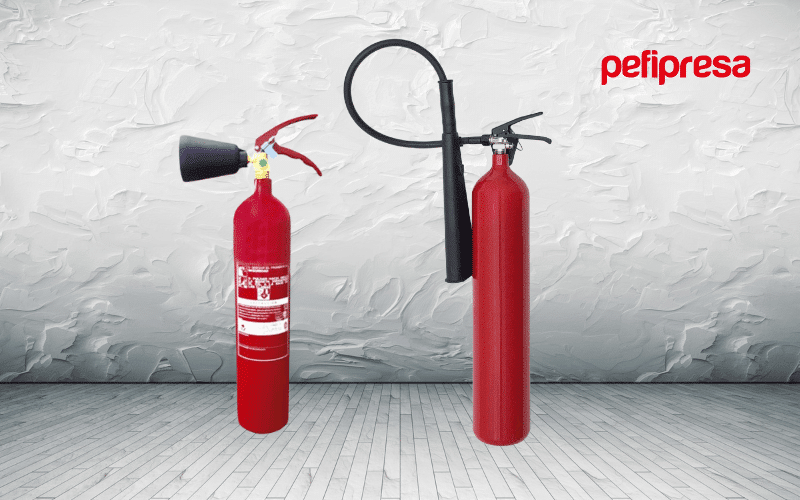
Special fire extinguishers
They are types of fire extinguishers that are used to put out fires where the others are not effective. Specifically, they are designed to put out class D fires where flammable dangerous metals are involved.
They act in different ways. By cooling, removing oxygen and absorbing heat by lowering the temperature.
It should be noted that fire extinguishers can have different sizes. There are quite large and heavy ones, such as carts, which have built-in wheels to allow them to be moved, giving them mobility for extinguishing fires in open areas.
Maintenance to be done on fire extinguishers
The different types of fire extinguishers are essential in any place, since it is the second line of defense against a fire, after prevention.
They have different operating mechanisms and include chemical reactions, so it is necessary to periodically perform maintenance on them, which may include renewing their content. On the other hand, it is important to note that this maintenance is mandatory by current legislation.
Maintenance plan
Maintenance must be done from time to time to all the components and the content of the extinguisher. Here we give you the recommendations of the manufacturers.
Monthly
Shake the extinguisher for about 2 minutes. This prevents your content from sitting in the background.
Similarly, it should be inspected to verify that it is fully charged, which can be checked through the pressure indicator of the equipment.
Quarterly
It must be checked that the seals, insurances and hose, among others, are in good condition.
It should also be checked if it is fully charged by checking the pressure.
According to Table I of the RIPCI Application Technical Guide (Quarterly and six-monthly maintenance program for active fire protection systems):
“Perform the following checks:
- That the fire extinguishers are in their assigned place and that they show no apparent signs of damage.
- That are adequate according to the risk to be protected.
- That do not have obstructed access, are visible or marked and have their driving instructions on the front.
- That the operating instructions are legible.
- That the pressure indicator is in the area of operation.
- That the metal parts (nozzles, valve, hose…) are in good condition.
- That the seals or caps indicating use are not missing or broken.
- That have not been fully or partially downloaded.
This requirement will also be considered fulfilled if the operations indicated in the “Quarterly Maintenance Program” of the UNE 23120 Standard are carried out.
Checking the signaling of the fire extinguishers.”
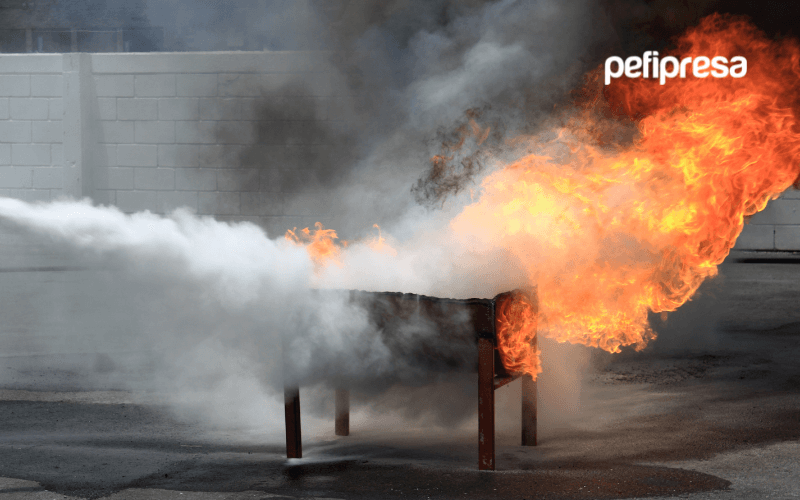
Annually
In this period it is recommended to replace the extinguishing agent. This is used to design the necessary training on the use and handling of the fire extinguisher.
Throughout the content verification and replacement procedure, all components are checked.
According to Table II of the RIPCI Technical Application Guide (Annual and five-year maintenance program for active fire protection systems):
“Perform maintenance operations as established in the “Annual Maintenance Program” of the UNE 23120 Standard.
In mobile fire extinguishers, the good condition of the transfer system will also be checked.”
Every 5 years
According to the regulations, hydraulic tests must be carried out and the fire extinguisher must be reset.
It should be noted that the latter will be done taking into account that its useful life is 20 years, taking the date of manufacture as a reference.
According to Table II of the RIPCI Technical Application Guide (Annual and five-year maintenance program for active fire protection systems):
“Carry out a level C test (stamp), in accordance with the provisions of annex III, of the Regulation of Pressure Equipment, approved by Royal Decree 2060/2008, of December 12 .
As of the date on which the fire extinguisher is stamped (and three times), it will be stamped again in accordance with the provisions of annex III of the Pressure Equipment Regulation.”
What is a fire
Fire is the occurrence of fire that spreads in an uncontrolled manner.
It is generated by the combination of three elements: an object fuel, oxygen and heat.
It is usually very destructive when it reaches large proportions, wreaking havoc not only with materials, but also with structural damage. This is not counting the number of human lives claimed by a fire.
The most common reasons why most people lose their lives in a fire are drowning caused by high temperatures and smoke.
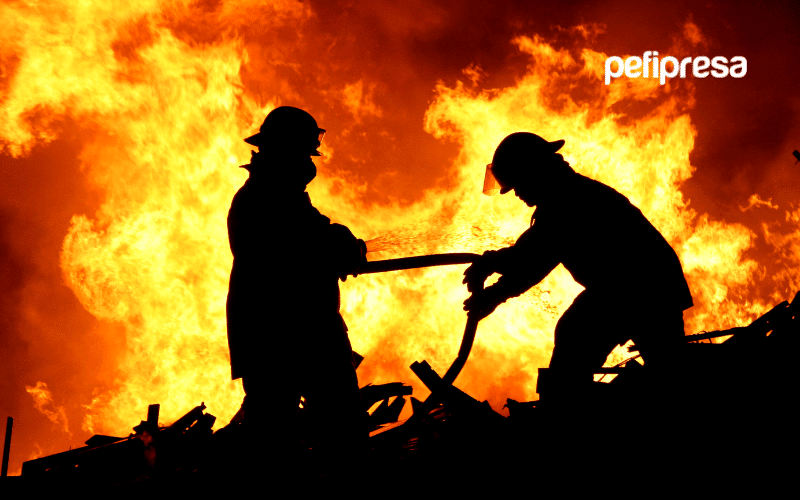
What are the most common causes of a fire in a building
The causes of a fire are many and can be accidental and caused, either with malicious intent or negligence, although most of them are accidental. The main ones are:
- Due to electrical short circuits and sparks on flammable materials.
- Welding sparks and equipment that use flames such as torches.
- Poorly put out cigarettes, matches, etc.
- Improper handling of flammable materials.
- Static electricity.
- Others.
As can be seen, most of these causes can be avoided. One of the most effective ways is to have a suitable fire extinguisher nearby and to know how to use it.
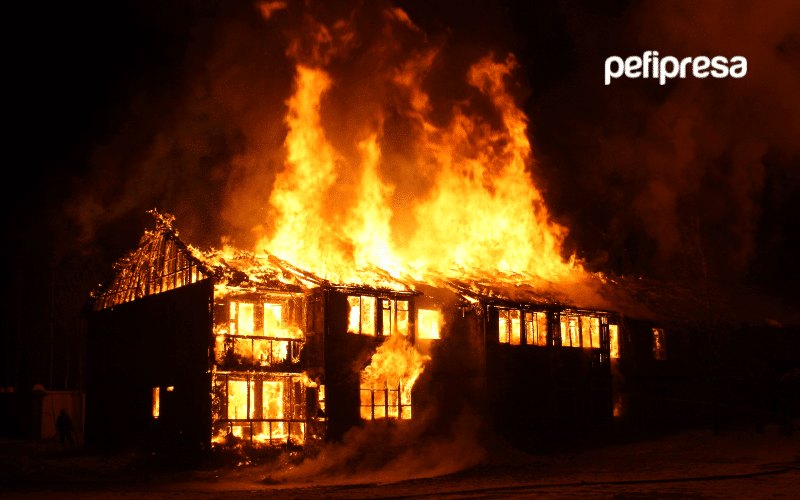
Phases of a fire
A fire, before becoming such, has gone through 3 well-differentiated phases which are:
- Incipient phase, is the phase in which the fire starts. It is characterized by an increase in temperature, but no smoke is generated.
- Combustion phase, is when the flame appears and begins to consume flammable materials and feeds on oxygen. The temperature rises very quickly and people begin to have breathing problems.
- Latent fire, at this point the flames completely engulf the entire structure. The temperature exceeds 300° C so it is no longer possible for people to survive.
In the first 2 phases it is possible to control the fire using manual systems. This as long as the types of fire extinguishers that best suit the situation are used.

